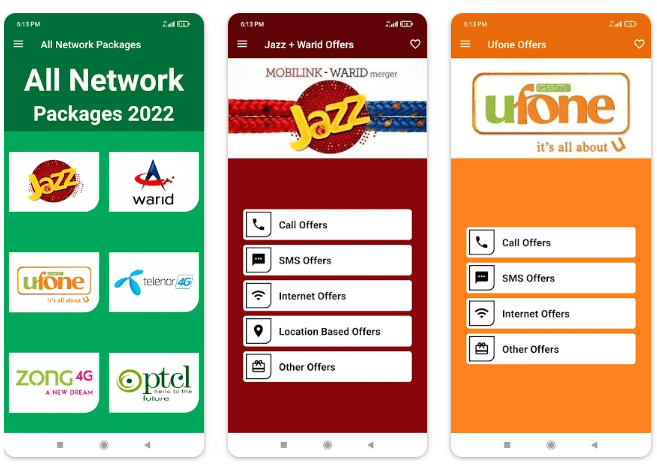Opensignal – 5G 4G Speed Test
Introduction to Opensignal
Are you tired of slow internet speeds and buffering videos? Want to find out which network offers the fastest 5G and 4G connections? Look no further than Opensignal – the ultimate authority in speed tests! In this blog post, we will dive deep into the world of 5G and 4G technology, explore why speed tests are crucial, understand how Opensignal conducts its tests, and unveil the rankings for different networks. So buckle up as we take a thrilling ride through the fast lanes of data connectivity. Get ready to boost your browsing experience with Opensignal’s revolutionary insights!
Understanding 5G and 4G Technology
Understanding 5G and 4G Technology
Technology has been rapidly evolving over the years, and one of the most significant advancements in recent times is the introduction of 5G and its predecessor, 4G. But what exactly are these technologies all about?
To put it simply, 4G refers to the fourth generation of mobile network technology. It brought faster internet speeds and improved connectivity compared to its predecessor, 3G. With 4G, users could enjoy seamless video streaming, quicker downloads, and enhanced browsing experiences.
Now, enter 5G – the fifth generation of wireless technology that takes things up a notch. With speeds up to twenty times faster than its predecessor, you can expect lightning-fast downloads, ultra-low latency for real-time applications like gaming or remote surgery, and an overall smoother user experience.
One key difference between these two technologies lies in their infrastructure. While both use radio waves to transmit data wirelessly between devices and cell towers, the frequencies used by each differ significantly. Specifically tailored for high-speed data transmission with low latency requirements,
As we continue incorporating more smart devices into our daily lives – from smartphones to IoT gadgets – having a reliable network connection becomes crucial. Being able to understand how these technologies work can help us make informed decisions when choosing which service provider suits our needs best.
In conclusion: The rapid evolution of technology has given rise to faster and more efficient communication networks such as 5G and its precursor-4g. Understanding how they function allows us not only appreciate but also utilize them effectively in our day-to-day activities across various sectors including healthcare gaming among others
The Importance of Speed Tests
In today’s fast-paced digital world, where we rely heavily on our smartphones and other mobile devices for almost everything, the importance of speed cannot be overstated. Whether it’s streaming videos, downloading large files, or simply browsing the internet, we all want a network that can keep up with our demands. And this is where speed tests come into play.
Speed tests are an essential tool for measuring the performance of your network connection. They help you determine how fast (or slow) your internet speeds are and give you valuable insights into the quality of your network service. By conducting regular speed tests, you can identify any potential issues with your connection and take appropriate actions to improve it.
But why is this important? Well, imagine trying to watch a high-definition movie on Netflix only to have it constantly buffering due to a poor internet connection. Or attempting to download an important document for work but having it take forever because of sluggish speeds. Frustrating, right? By running speed tests regularly, you can ensure that you’re getting the fastest possible speeds from your 5G or 4G network.
Moreover, speed tests also enable you to compare different networks and providers in terms of their performance. This information is especially crucial when choosing a new provider or considering switching networks. It allows you to make informed decisions based on real-world data rather than relying solely on marketing claims.
Additionally, understanding how well your current network performs through speed testing can help troubleshoot any connectivity issues you may be facing. If there are consistent drops in signal strength or slower-than-expected speeds despite being within range of cell towers or Wi-Fi access points – knowing this through reliable test results will assist in seeking technical support from either the service provider or IT professionals specializing in networking solutions.
By taking advantage of Opensignal’s comprehensive platform for conducting accurate and unbiased speed tests across various locations worldwide – users gain valuable insight into their networks’ capabilities while contributing anonymized data that helps Opensignal in providing rich reports, analysis, and rankings.
Opensignal’s Methodology for Conducting Speed Tests
Opensignal’s methodology for conducting speed tests is both comprehensive and reliable. They have developed a sophisticated approach to measure the performance of 5G and 4G networks accurately.
Opensignal uses an extensive network of users who have installed their mobile app. These users act as data collectors, providing real-time information about network speeds and performance. This crowdsourced data allows Opensignal to gather a vast amount of information from various locations around the world.
Opensignal takes into account multiple factors when conducting speed tests. They consider not only download speeds but also upload speeds, latency, and other key metrics that impact overall network performance. This holistic approach provides a more complete picture of each network’s capabilities.
Furthermore, Opensignal employs statistical techniques to analyze the collected data. They use advanced algorithms to calculate average speeds for different networks in specific regions or countries. This statistical analysis ensures accuracy and helps eliminate outliers or anomalies in the results.
Additionally, Opensignal regularly updates its methodology to adapt to changes in technology and user behavior patterns. They take into consideration new developments such as improved infrastructure or changes in user usage habits that may affect network performance.
Opensignal’s methodology for conducting speed tests is rigorous and reliable. Their commitment to collecting accurate data from real users ensures that their rankings reflect the true performance of 5G and 4G networks worldwide.
Results and Rankings of 5G and 4G Speed Tests
Results and Rankings of 5G and 4G Speed Tests
Opensignal’s speed tests provide valuable insights into the performance of 5G and 4G networks across different locations. These tests measure various parameters such as download speed, upload speed, latency, and signal strength to determine the overall network performance.
In their latest report, Opensignal reveals the rankings of different mobile network operators based on these speed test results. The rankings are a reflection of how well each operator is delivering on their promise of high-speed connectivity.
The results show that some operators are excelling in providing faster speeds while others still have room for improvement. This data allows users to make informed decisions when choosing a network provider based on their specific needs and location.
It’s important to note that these rankings can change over time as technology evolves and new infrastructure is deployed. Therefore, it’s crucial for users to regularly check Opensignal’s updates for the most accurate information regarding network performance.
By analyzing these results, users can identify which networks offer the best speeds in their area and ensure they have an optimal online experience. Whether it’s downloading large files, streaming HD content, or playing online games, having a reliable connection with fast speeds enhances the overall user experience.
Opensignal’s comprehensive approach to measuring network performance provides transparency in an industry where promises often don’t match reality. Users can rely on these objective measurements to make informed choices about their mobile service providers.
As more areas around the world adopt 5G technology, Opensignal will continue to monitor and report on its deployment progress and effectiveness. This real-time data helps consumers stay up-to-date with advancements in wireless technology and choose networks that align with their desired level of connectivity.
With Opensignal being at the forefront of this research field by offering detailed insights into speed test results across various regions globally through its user-friendly app or website interface – there has never been a better time than now for you (the reader) to take advantage of this valuable resource and find the best network for your
Factors Affecting Speed Test Results
Factors Affecting Speed Test Results
When conducting speed tests on Opensignal, it’s important to consider the various factors that can influence the results. These factors can range from network congestion to device limitations and even environmental conditions.
One of the main factors affecting speed test results is network congestion. During peak usage times or in highly populated areas, networks may become congested, leading to slower speeds. This means that your speed test results might not accurately reflect the actual capabilities of a network under optimal conditions.
Another factor to consider is the type of device you are using for the speed test. Older devices may not be able to support higher speeds offered by 5G networks, resulting in lower test results. Similarly, if your device has outdated software or limited processing power, it could impact the accuracy of the test.
Environmental conditions can also have an impact on speed test results. Physical obstructions like buildings or trees can interfere with signal strength and quality, leading to slower speeds. Additionally, distance from cell towers and geographical terrain can affect signal reception and ultimately impact your speed test results.
It’s crucial to keep these factors in mind when interpreting speed test results on Opensignal. Remember that real-world performance may vary depending on these variables, so it’s always a good idea to conduct multiple tests in different locations and at different times for a more comprehensive understanding of network performance.
By considering these influencing factors when analyzing your Opensignal speed test data, you’ll be better equipped to make informed decisions about which network best suits your needs and expectations.
How to Use Opensignal to Find the Best Network for You
How to Use Opensignal to Find the Best Network for You
When it comes to choosing the best network provider, Opensignal is an invaluable tool that can help you make an informed decision. With its comprehensive speed test data and user-friendly interface, Opensignal makes finding the best network for your needs easier than ever before.
To start using Opensignal, simply download the app from your mobile device’s app store. Once installed, open the app and allow it access to your location. This is crucial in order for Opensignal to accurately measure and analyze network performance in your area.
Once you’ve granted access, you’ll be presented with a map showing nearby cell towers and their respective coverage areas. This gives you a visual representation of which networks are available in your vicinity.
Next, run a speed test by tapping on the “Test” button within the app. The speed test will measure various metrics such as download and upload speeds, latency, and signal strength. It’s important to conduct multiple tests at different times of day to get a more accurate picture of network performance over time.
After running several tests, Opensignal will provide you with detailed reports showcasing each network’s performance in terms of speed and reliability. These reports include average speeds across 3G, 4G LTE, or 5G networks depending on what is available in your area.
In addition to speed test results, Opensignal also provides information on other factors that may impact network performance such as coverage availability indoors or outdoors and video streaming experience on different networks.
With all this data at hand, you can compare different networks side by side based on their performance metrics and choose the one that best meets your needs. Whether you prioritize fast download speeds for streaming or reliable connectivity for gaming or business purposes –Opensignal has got you covered!
So why settle for subpar mobile service when there’s an easy way to find out which network performs best where you live? Give Opensignal a try and unlock the power of reliable and fast mobile connectivity!
Future of 5G and 4G Technology
The future of 5G and 4G technology holds immense potential for transforming the way we live, work, and connect with each other. As we continue to rely more on mobile devices and demand faster internet speeds, these advancements will play a crucial role in shaping our digital landscape.
With the rollout of 5G networks across the globe, we can expect lightning-fast download and upload speeds that will revolutionize industries such as healthcare, transportation, manufacturing, and entertainment. Imagine downloading an entire movie within seconds or experiencing virtual reality with minimal latency. The possibilities are endless!
Moreover, 5G technology promises greater network capacity and improved reliability compared to its predecessor. This means that even in densely populated areas or during peak usage times, users can expect consistent performance without any lag or interruptions.
But what about 4G? While it may not be as glamorous as its successor, it still has a vital role to play in our connected world. Many regions around the world have yet to fully adopt 5G infrastructure due to various logistical challenges. In these areas, 4G will continue to serve as a reliable backbone for mobile connectivity.
Additionally, both technologies are expected to coexist for some time before widespread adoption of 5G becomes a reality. This transition period allows businesses and consumers alike to gradually adapt their devices and applications.
In conclusion (as per instructions), the future of 5G and 4G technology is promising indeed. We can look forward to faster speeds, enhanced capabilities,and new opportunities across various sectors.
As technology continues its rapid evolution,networks like Opensignal will play a crucial role in helping us navigate this ever-changing digital landscape
Conclusion
Conclusion
In this fast-paced digital age, where staying connected is more important than ever, Opensignal has emerged as a reliable and trusted authority when it comes to measuring network speeds. With their comprehensive methodology and extensive data collection, they provide valuable insights into the performance of both 5G and 4G networks.
Through their speed tests, Opensignal allows users to compare different network providers and find the one that best suits their needs. Whether you’re a business professional relying on seamless video conferencing or a gaming enthusiast looking for low latency connections, Opensignal can help you make an informed decision.
While 5G technology promises lightning-fast speeds and remarkable advancements in connectivity, it is still in its early stages of deployment. However, with continuous innovation and infrastructure development, we can expect 5G networks to become more widespread in the coming years.
In the meantime, 4G networks continue to be the backbone of our mobile communication systems. As Opensignal’s findings show us, there are significant variations in performance among different network operators. By using Opensignal’s platform regularly to assess your network’s speed capabilities and comparing them against other options available in your area, you can ensure that you are getting the best possible connection.
Opensignal not only empowers individual users but also provides crucial data for policymakers and industry leaders. By understanding network performance trends through comprehensive speed tests conducted by millions of real-world users worldwide, stakeholders can make informed decisions regarding infrastructure investment and technological advancements.
As we move towards a future driven by hyper-connectivity and smart technologies like IoT (Internet of Things) devices and autonomous vehicles rely heavily on stable high-speed connections – ensuring that our networks are robust becomes even more critical. Continual monitoring through platforms like Opensignal will play an instrumental role in shaping this future landscape.
So whether you’re excited about embracing cutting-edge 5G technology or content with enjoying reliable 4G connectivity for now,
Opensignal helps you navigate the complex world of network providers and find the best fit for your needs



